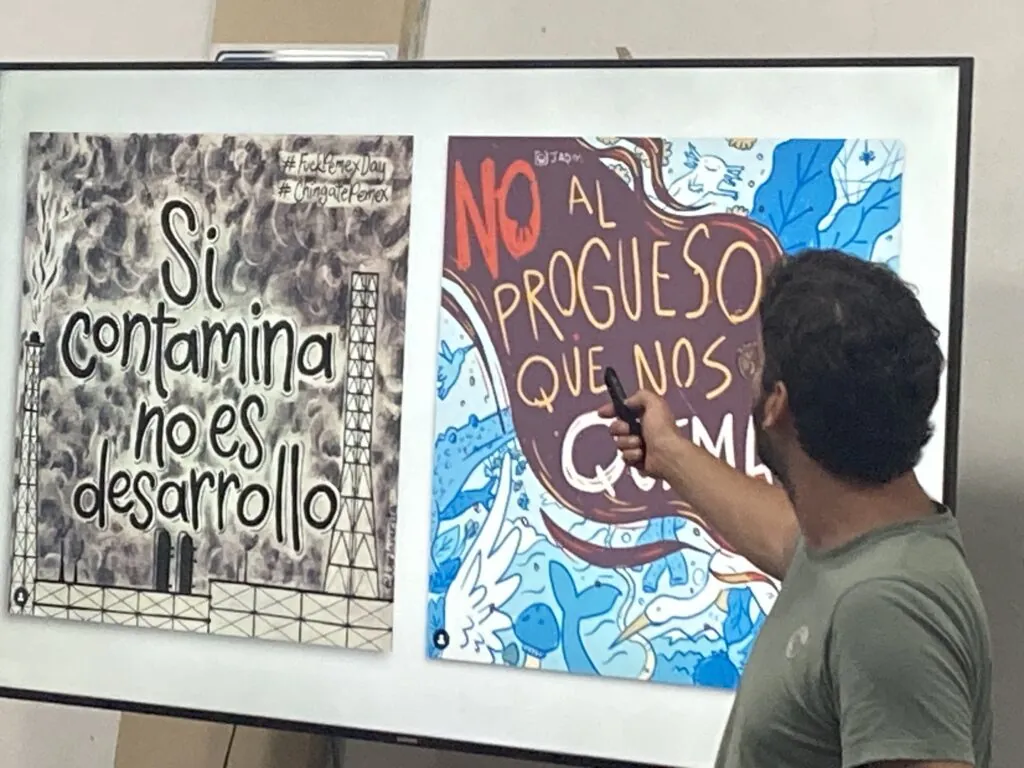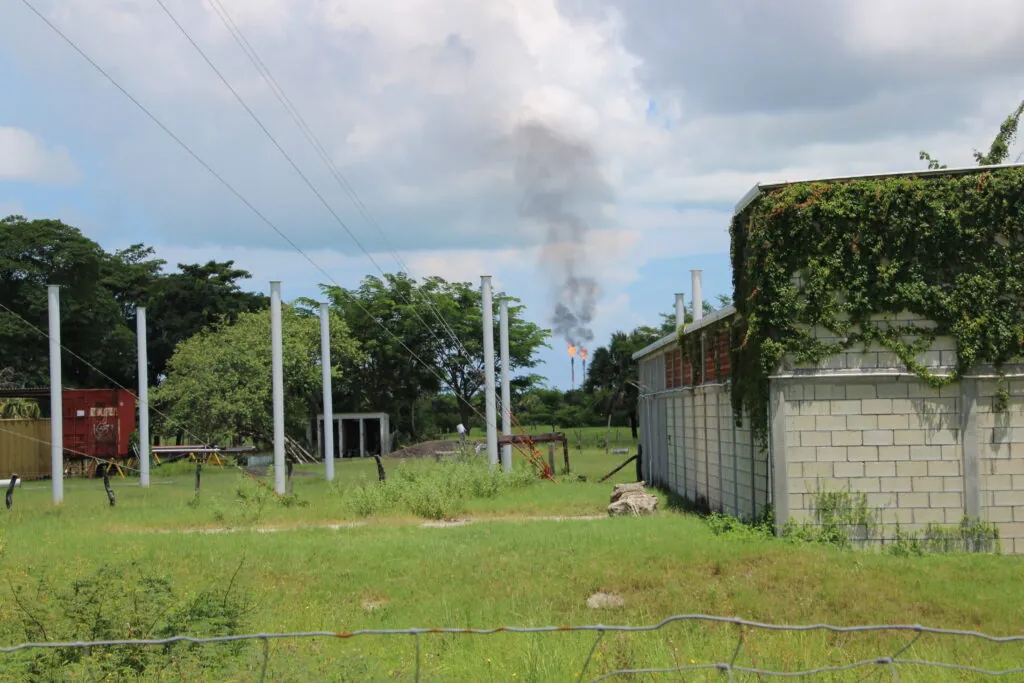|
Getting your Trinity Audio player ready...
|

From August 26-30, 2024, Earthworks accompanied Mexican not-for-profit organizations CEMDA (Mexican Environmental Law Center) and Conexiones Climáticas on a visit to communities affected by ever expanding oil and gas infrastructure in Campeche and Tabasco, in the Gulf of Mexico.
The OGI images captured during the recent visit to the region show a great deal of air pollution from the broad array of interconnected infrastructure. The vast majority of the impact comes from flares in gas processing and distribution facilities (Pemex’s Atasta, Cactus, Dos Bocas terminal separator plants, as well as the major Dos Bocas/Olmeca Refinery). We also found seemingly inefficient combustion from exhaust stacks or enclosed combustion stacks in Pemex’s Cactus and Engie Energy’s Mayakan II plants. (Note 11/4/24: Engie’s communications and media agency contacted Earthworks to dispute ownership of the chimneys; Earthworks is investigating the ownership issue). The long tail of hydrocarbon plumes reveal likely inefficient burning of methane into carbon dioxide; thus, significant amounts of methane is vented into the atmosphere. (SEE: Our playlist of findings).
Methane is a potent greenhouse gas that is 86 times more powerful at warming the climate than carbon dioxide in a much shorter period of time of 20 years. Emissions also often include harmful gases like benzene, ethanol, butane, ethylene, ethylbenzene, xylene, hydrogen sulfide, silica dust, nitrogen oxide, and propane. Pollution from existing and expanding oil and gas operations are increasing the likelihood of health impacts such as effects on the nervous system, organ damage (including kidneys, brain, liver, and lungs), and various cancers.
Community members complained of strong smells of hydrocarbon gasses, as well as recurring strong headaches, nausea, nose-bleeds, and general malaise. These communities are the sacrifice zones for the global economic model that favors mega-development and until-the-last-drop fossil fuel extraction and production.

A plan to expand oil & gas facilities increases risk of pollution
The Gulf of Mexico in southeast Mexico is responsible for a substantial amount of oil (80%) and gas extraction (~90%) production in the country. These states’ economies are closely linked to the oil, gas and LNG industry, and increasingly dependent on U.S. gas from the Texas Permian region, transported via a to-be-connected system of pipelines, some of which traverse underwater.
Puerta al Sureste Pipeline, owned by the Canadian company TC Energy working in association with CFE (Federal Electricity Commission) will move 1.3 billion cubic feet of gas every day when it is inaugurated in 2025. The Gulf of Mexico region hosts one of the largest marine ecosystems in the world, and is an area known for its rich biodiversity and fisheries. In June 2023, Greenpeace Mexico and other environmental NGOs in Mexico and globally brought attention to the impact of the construction of the Sur de Texas-Tuxpan underwater pipeline on coral reefs in the coast of Veracruz. In July 2023, an oil spill the size of 140 soccer fields and that resulted in residue washing up in the coastal shores was denounced by experts from the National Autonomous University of Mexico (UNAM).
Newly elected President Claudia Sheinbaum has been tightening relations with U.S. and Mexican investors to secure at least $20billion in investments on similar infrastructure projects connected to the fossil fuel industry.
Although the plan supposedly secures a large portion of the energy needed for consumption in the nation, there are significant risks for creating a dependency on fossil fuels, on top of environmental and health risks associated with this buildup. More than 70% of fossil gas in Mexico comes from the U.S. 20 years after the peak of oil extraction in Mexico, a fossil-fuel-growth approach like the one proposed by investors and the Mexican government denies the possibilities that exist in rethinking a path toward a just energy transition, respect for nature and peoples, and the structural transformation that communities and environmental experts have called for, with initiatives such as Nuestro Futuro, Nuestra Energia.
An expansive project of this size will undoubtedly mean harm to communities nearby and it will worsen the climate crisis. A 2021 study by the Environmental Defense Fund (EDF) revealed that oil and gas facilities in the southeast region in the Gulf of Mexico resulted in 10 times more methane emitted to the atmosphere than what was reported by the government. These polluted fossil fuel emissions would have been enough to supply the annual internal energy domestic consumption of half of the population in Mexico, according to EDF’s Daniel Zavala, author of that study. Ironically, in the same year, Mexico signed the Global Methane Pledge which represents an official compromise to reduce methane emissions by 30% by 2030.
Many of the communities are continuing to fight back, eager to turn the tables on this sacrifice zone approach, and show their fellow citizens that another world can be created. Conexiones Climaticas and CEMDA are supporting local communities to enable this narrative shift, and with legal support to put a halt to the buildout and seemingly endless permitting for the industry.
